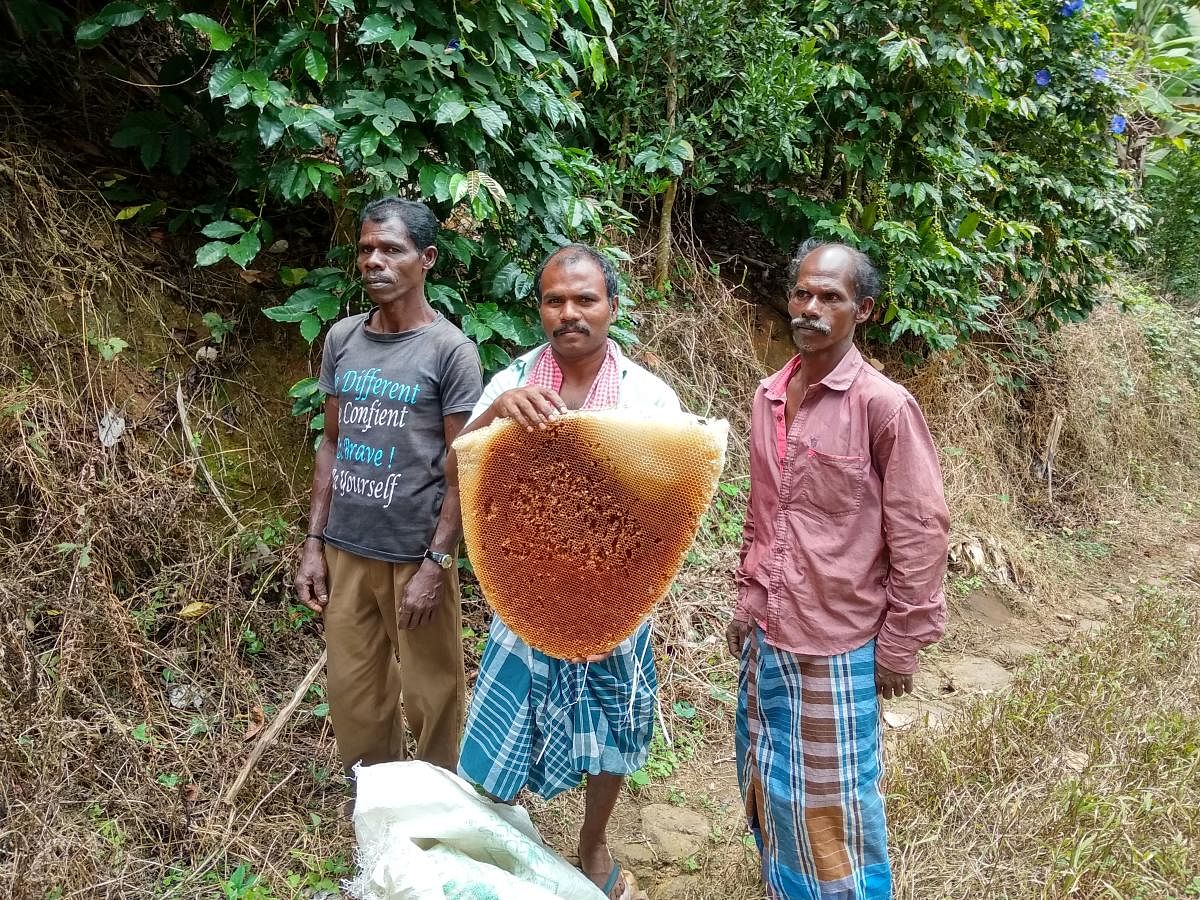
Their story began on a honey sweet note. They were intrigued by the hunter-gatherer lifestyle of the Paliyan tribals, the Adivasis based in the Palani Hills of Tamil Nadu, and wanted to be a part of it. The practice of gathering honey, and the prospect of helping the Adivasis sell the wild viscous nectar got the Bengaluru-based duo, Nishitha Vasanth and Priyashri Mani, to move to Kodaikanal.
“In 2015, we visited villages in the Palani Hills to understand the Adivasis who live there and take care of the forests. As we documented their history for a project funded by INTACH Delhi, we discovered the traditional practice of gathering honey. They asked us if we like to buy some honey for ourselves. We soon realised we were buying more than we could consume and hence decided to sell it. Things grew organically from then on,” says Priyashri. What began as an exchange of ideas eventually resulted in Hoopoe on a Hill (HoH), adds Nishita.
“The Adivasis have a long tradition of trading honey. Earlier, they would exchange it for clothes or salt or whatever they needed, but now, they do it for money,” says Priyashri.
Raw emotions
Priyashri says their efforts have been towards ensuring that the Adivasis get a constant market for their honey that is fair and non-exploitative. “This gives Adivasis one more reason to continue their traditional livelihood inside the forest,” Nishita adds.
“We don’t claim to change lives. I think it is presumptuous to assume that something like this can have such a huge impact. Although everyone is constantly looking for simplistic narratives of change, we feel meaningful change is a much longer and slower process, and we are interested in that,” says Priyashri.
A tradition
The duo was initially amazed by how the Paliyans, foray into the Shola forests in groups for days on end to gather honey. “They camp in the forests and build their tools on the spot with vines and dried twigs. A small prayer is offered before skilful climbers clamber up (trees, caves or cliffs) to the hives. They smoke out the bees, deftly collecting only the honey chamber of the hive. The honeycombs are brought down and the honey is extracted. Leaving behind hives for the following season and the bees, they return with cans of honey on their long journey home,” says Priyashri.
Nishita says this knowledge and skill has been passed down over many generations. There are cultural practices and rituals or ‘ways of doing things’ within the community that upholds values of sustainability and prevents over-consumption. “The Paliyans lead much more ‘sustainable’ lives than us. So we try and learn rather than teach them lessons on sustainability,” Nishita says.
The Paliyans have a tradition of not killing the bees for their nectar. During the harvesting process, bees are temporarily smoked out of their hives so they return to their homes after the harvesting.
“Only the honey chamber is cut from the comb, leaving behind the brood intact so that bees can simply rebuild the honey chamber in the following season. Also, the scale of the harvest is limited by the fact that no machines or large scale harvesting techniques are employed. The harvest is still done by individual Adivasis who have to camp several nights in the forest to collect honey. The entrepreneurs have ensured a constant market for the harvest.
According to Priyashri, during the honey season, the Adivasis have access to relatively larger sums of money which is used to cover bigger expenses like school fees, weddings, paying back loans etc. Compared with daily wage work, this activity generates more capital within the community, Nishita says.
Just like the Hoopoe bird, known for its surging flight, Nishita and Priyashri’s journey, too, has been one of ups and downs, but contentment has kept them afloat. Although the duo moved to Kodaikanal, they still remain connected with the city. Work constantly brings us to the city. But we love our home here,” they say in unison.